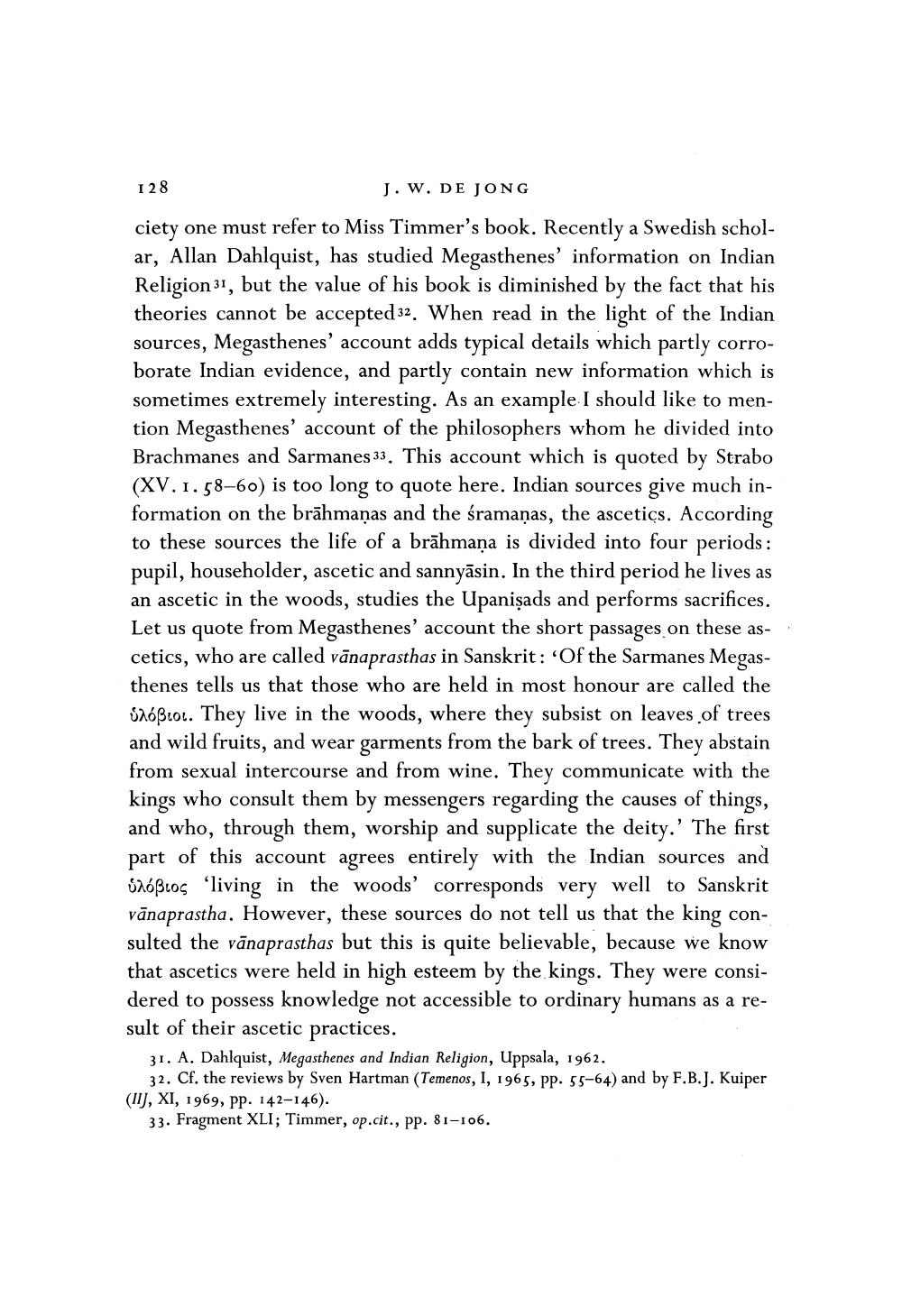________________
128
J. W. DE JONG
ciety one must refer to Miss Timmer's book. Recently a Swedish scholar, Allan Dahlquist, has studied Megasthenes' information on Indian Religion 31, but the value of his book is diminished by the fact that his theories cannot be accepted 32. When read in the light of the Indian sources, Megasthenes' account adds typical details which partly corroborate Indian evidence, and partly contain new information which is sometimes extremely interesting. As an example I should like to mention Megasthenes' account of the philosophers whom he divided into Brachmanes and Sarmanes 33. This account which is quoted by Strabo (XV. 1.58–60) is too long to quote here. Indian sources give much information on the brāhmaṇas and the śramaņas, the ascetics. According to these sources the life of a brāhmaṇa is divided into four periods : pupil, householder, ascetic and sannyāsin. In the third period he lives as an ascetic in the woods, studies the Upanişads and performs sacrifices. Let us quote from Megasthenes' account the short passages on these ascetics, who are called vānaprasthas in Sanskrit: 'Of the Sarmanes Megasthenes tells us that those who are held in most honour are called the Shoß.ol. They live in the woods, where they subsist on leaves of trees and wild fruits, and wear garments from the bark of trees. They abstain from sexual intercourse and from wine. They communicate with the kings who consult them by messengers regarding the causes of things, and who, through them, worship and supplicate the deity.' The first part of this account agrees entirely with the Indian sources and úróßlos 'living in the woods' corresponds very well to Sanskrit vānaprastha. However, these sources do not tell us that the king consulted the vānaprasthas but this is quite believable, because we know that ascetics were held in high esteem by the kings. They were considered to possess knowledge not accessible to ordinary humans as a result of their ascetic practices.
31. A. Dahlquist, Megasthenes and Indian Religion, Uppsala, 1962.
32. Cf. the reviews by Sven Hartman (Temenos, I, 1965, pp. 55-64) and by F.B.J. Kuiper (II), XI, 1969, pp. 142–146).
33. Fragment XLI; Timmer, op.cit., pp. 81-106.




